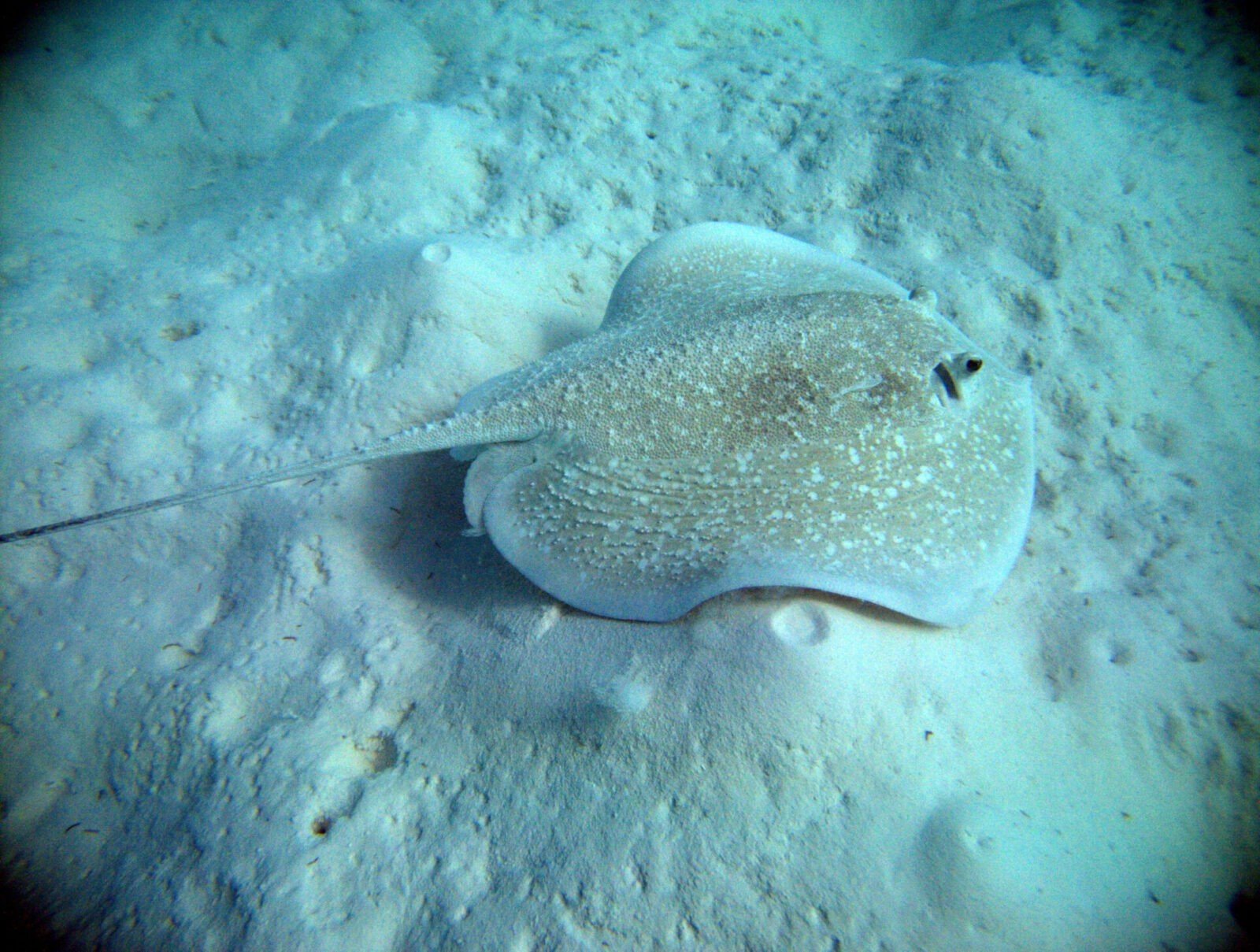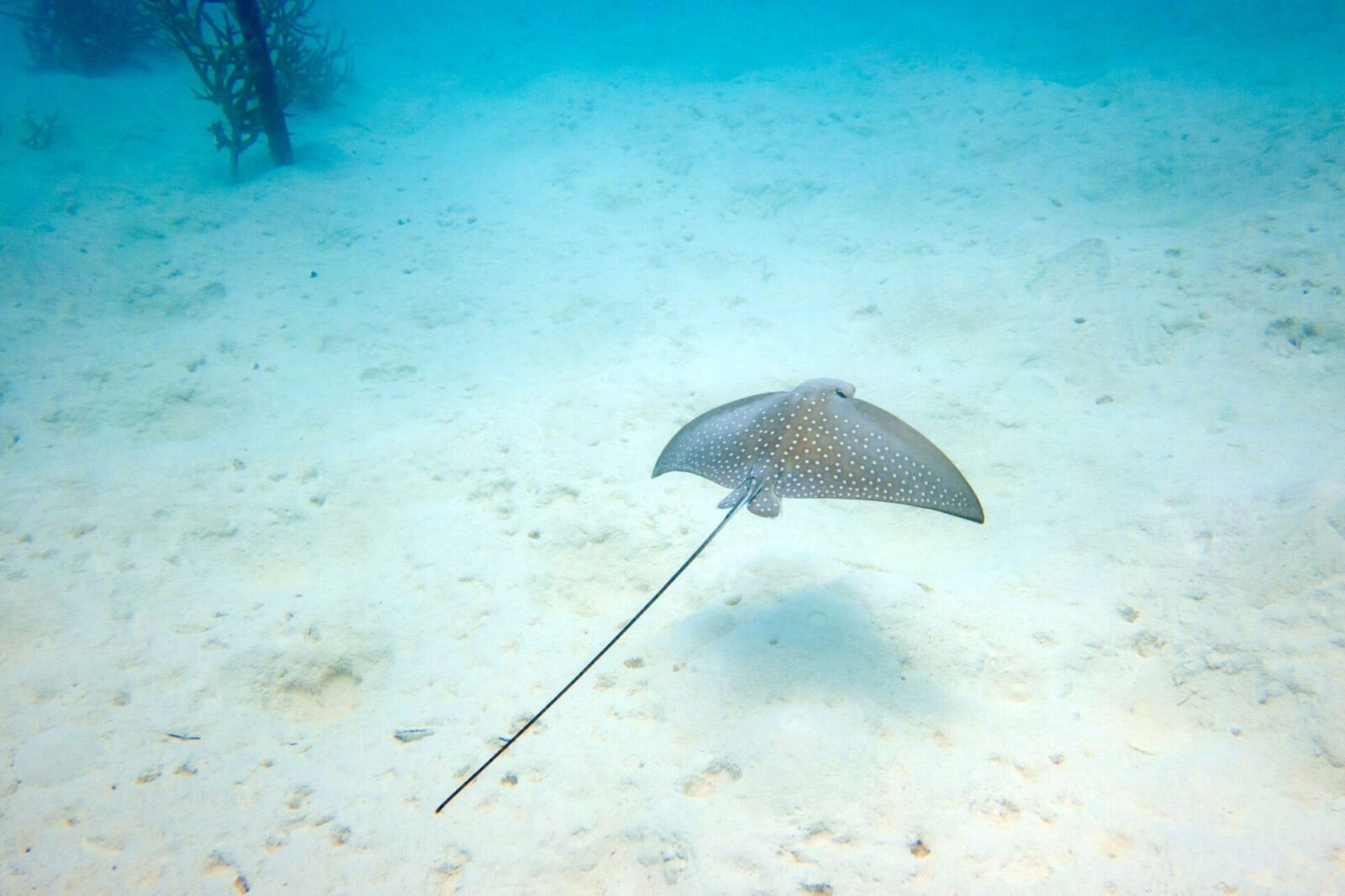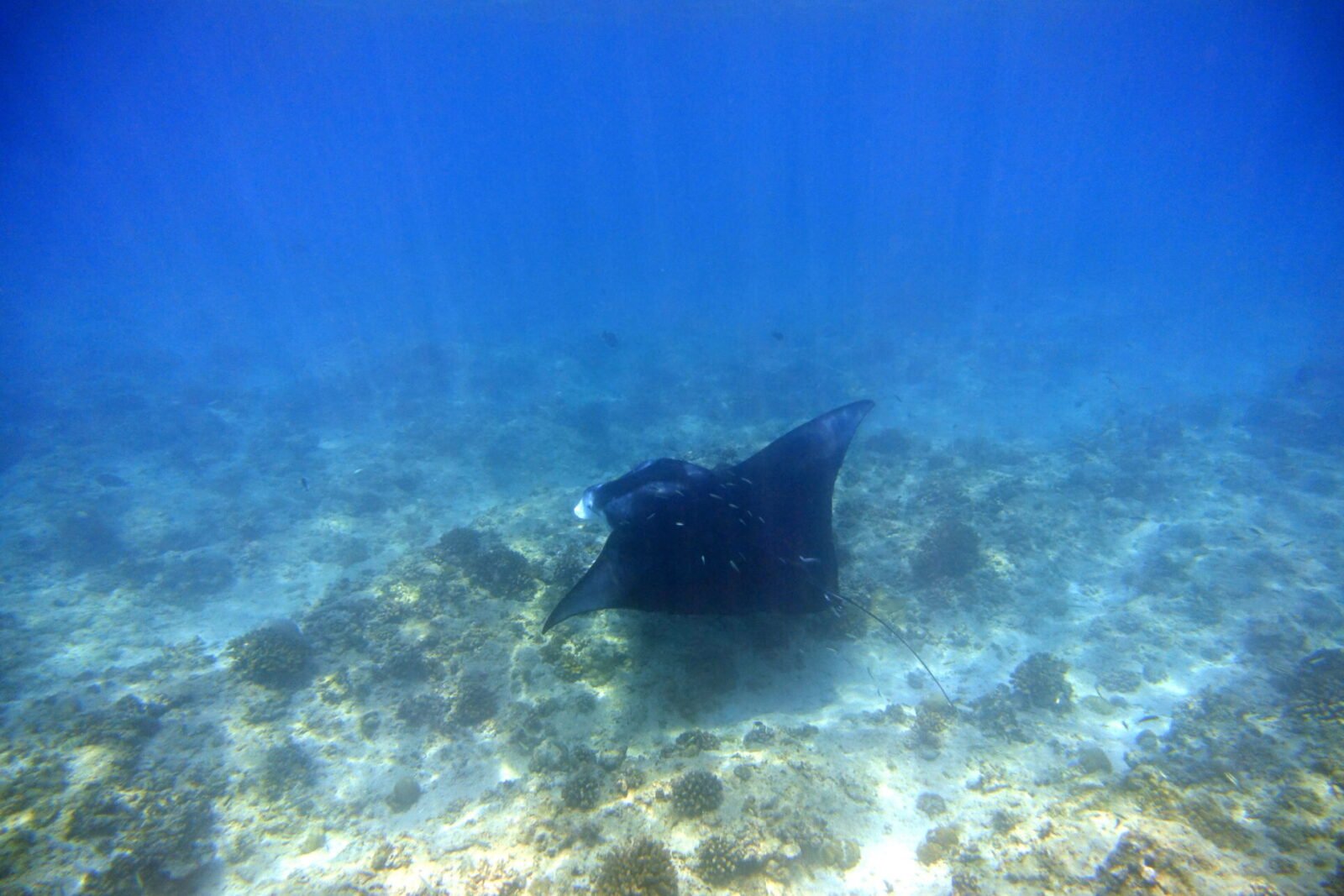Stingrays, eagle rays, and manta rays…all rays, so what’s the difference?
At Gili Veshi, we are often asked how to distinguish between the different types of rays. The main groups are stingrays, eagle rays and manta rays. All are cartilaginous fish closely related to the shark. Rays have a flattened body and pectoral fins fused to into their wide bodies which make them seem like they have wings. Once you see the rays in real life, you’ll know the differences instantly. But for those of you who are still on the mission to find your first rays, here are some differences to look out for when you do see one:
 Photo of a Stingray
Photo of a Stingray
Size and Shape
- Stingray: A diverse group of rays that range is size. They can be as small as 10 centimeter in diameter or upwards of two meters. Their size largely vary depending on the species. They have a disc shaped body as their pectoral fins are rounded on the edge.
- Eagle Ray: Usually around one or two meters in wing span with a diamond body shape as their pectoral fins are pointed at the ends.
- Manta Ray: Reef mantas are around five meters wing tip to wing tip when they mature. Their larger cousins, oceanic mantas can reach up to seven meters in wing span. Their large size makes their diamond body shape very majestic as they swim through the water.
 Photo of an Eagle Ray
Photo of an Eagle Ray
Feeding Method
- Stingray: Bottom feeders whose mouth is located on the underside of the body. They are often in search of crustaceans or mollusks on the ocean floor.
- Eagle Ray: Bottom feeders with ventrally positioned mouth but unlike the stingrays, the shape of their head allows them to use their body like a shovel to dig up food hidden under the sand.
- Manta Ray: Filter feeders who have mouths that are forward facing. Manta rays filter feed on zooplankton in the water column. They have cephalic fins which can extend straight out almost like horns from their bodies to help them guide their food into the mouth while feeding
Habitat
- Stingray: Can be found in topical, warm temperate waters, as well as freshwater depending on the species. They are usually bottom dwellers as they then find food and hide in the sand from predators, thus rarely swim up and around in the water column.
- Eagle Ray: Found mostly in warm coastal waters foraging off the ocean floor for food. But they are also often found gliding through the water column when they are not busy foraging on the ocean floor.
- Manta Ray: Pelagic fish that spend their lives gently gliding through the water column. Reef mantas are seen in shallow waters which makes encounters with them as snorkelers and divers possible. On the other hand, the oceanic specie is thought to live in the deep ocean and one may need more than a stroke of luck to see them on a dive

Photo of a Manta Ray
Tail
- Sting Ray: Most stingrays have a barb on their tail they use for defense. Although many people think this is quite scary, sting rays are actually shy creatures that will swim way and only use their barb if they feel really threatened and unable to escape a situation.
- Eagle Ray: Relatively long tail compared to other ray species with a few venomous spines. However, like most animals, will not pose a danger unless threatened.
- Manta Ray: Long thing tail that does not have spines or barbs on it. A small dorsal fin at the base of the tail where it meets the body.
Now when you spot a ray from the surface or in the water, you’ll be able to tell which type you’ve encountered. At Gili Lankanfushi, we more than often find stingrays roaming around our villas and in the waters off the beaches. Eagle rays are not a rare sight when we go for snorkels or dives on our house reef and surrounded sites. We are also blessed to have manta rays in our atoll all year round (in different locations depending on the season) and often see them after taking a short boat ride to various snorkel and dive sites. If you still have yet to encounter these amazing creatures, it sounds like you should come pay us a visit at Gili Lankanfushi and let us take you on incredible underwater adventures. Hope to see you around!